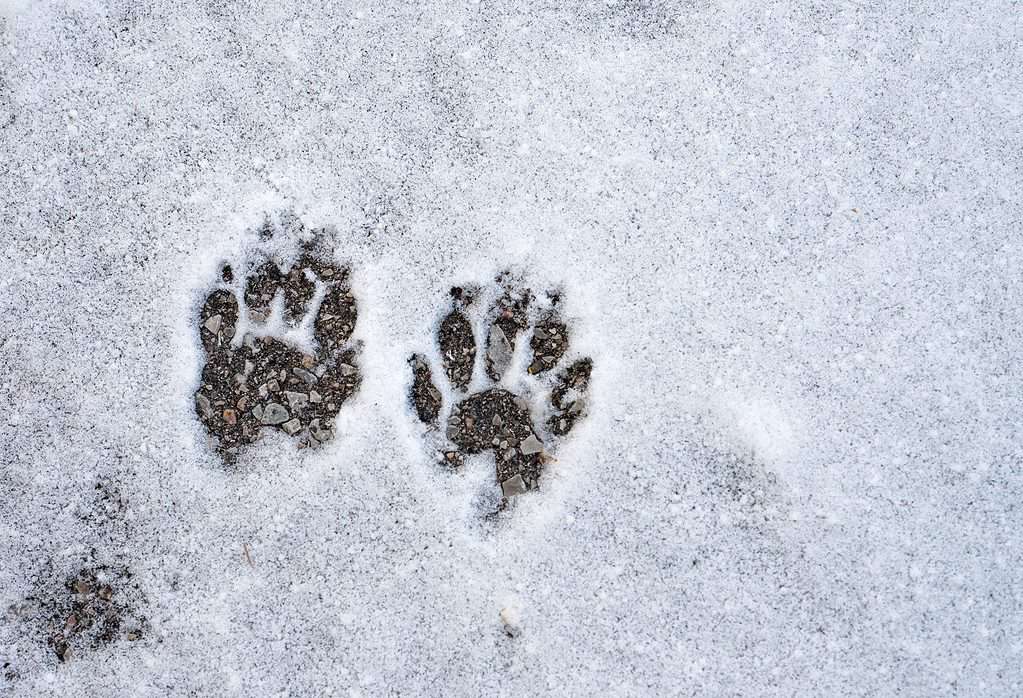It was 30 years ago that the storm of the century struck Georgia.
Georgia isn’t known for being a winter wonderland. Residents call it a snowball’s chance when discussing whether or not any flakes will fall. But when a snowstorm hit 30 years ago, heavy snow began blanketing the south. Soon the state was dealing with downed power lines, collapsing roofs, and streets transforming into skating rinks. The unsafe driving conditions left many stranded, forced to ride out the storm at whatever shelter they could find. Follow along as we discover exactly what it was like during Georgia’s biggest March snowstorm ever.
Georgia’s Biggest March Snow Storm

The 1993 March snowstorm in Georgia was one of the most expensive and deadliest weather events of the 20th century.
©LesPalenik/Shutterstock.com
Georgia’s biggest snowstorm was in March of 1993. The rare weather event was deadlier than most landfalling hurricanes and tornado outbreaks. It went down in history as one of the most expensive and deadliest weather events of the 20th century.
The cyclonic storm formed over the Gulf of Mexico on March 12th. What followed was heavy snowfall, high winds, and freezing temperatures that affected a massive area. Before the storm hit, the weather conditions also caused wild temperature swings on the afternoon of March 10th, 1993. Only 3 days before the storm, Macomb, Georgia, experienced an unusual March high of 79° F.
Georgia wasn’t the only one impacted by the storm. The intense mid-latitude cyclone spread from Canada to Honduras. There were unusual amounts of snowfall all the way from Alabama through Maine.
The storm of the century, also called the great blizzard of 93, earned its name due to the intense snowfall and massive size. Part of the storm’s size was due to the low barometric pressures causing unseasonably cold air. There was cold air pushing across the interior southeast. It then began moving inland across Southern Georgia.
Blizzard conditions developed from Alabama and Georgia into Western Carolina and Virginia. New records for snowfall occurred in Birmingham, Chattanooga, Asheville, and other cities.
How Snowy Did It Get?
During the great blizzard of 93′, parts of Georgia got 35 inches of snow. The snow was everywhere! All 67 counties in Alabama reported snowfall.
Central Georgia only received a glancing blow from the storm, with the northern portion getting hit the hardest. In Central Georgia, there were about 4 inches of snow. Moving south, Macon had 2.6 inches of snow. And there were southern areas that didn’t have to accumulate snow but still saw snowfall.
Heavy snow was first reported in Northern Georgia, with Union County, Georgia, reporting 35 inches of snow. While Blairsville, Georgia, had an incredible foot and a half of snow due to its higher terrain.
Impact of the Storm on Residents
During the blizzard, roofs were damaged, streets were slick sheets of ice, and trees began falling from the high winds and weight of the snow. Many trees and branches took out power lines, causing a lot of power outages. Nationwide, the biggest March snowstorm was responsible for $2 billion in damages.
The intense storm battered the eastern coast of North America from March 12th through March 15th, 1993. That’s a long time to deal with such harsh weather conditions. The US Coast Guard had to rescue over 100 people from distressed ships during the storm. Nationwide there were 270 fatalities, with 15 of the fatalities occurring in Georgia.
Why Isn’t the Blizzard of 66’ the Biggest March Storm?
When the blizzard of 93′ hit Georgia, many residents were reminded of the blizzard from 1966. But even though this storm was massive, it wasn’t the biggest March snowstorm for the state.
During the blizzard of 66, the state reported up to 38 inches of snowfall. High winds battered the state reaching speeds of 70 mph and lasting up to 4 days in some areas.
The storm of 66′ was one of the most severe blizzards to impact the Northern plains. But the Georgia blizzard of 93 is still officially the biggest snowstorm in Georgia’s history. It didn’t have the most snowfall, but the weather conditions were more severe.
Average March Temperatures in Georgia

During March, it’s typical for Atlanta, Georgia, to experience highs between 61° F to 69° F, and it’s usually partially overcast or cloudy about 48% of the time.
©Sue Smith/Shutterstock.com
Georgia is the sixth state in the United States to receive the least snow. During March, it’s typical for Atlanta, Georgia, to experience highs between 61° F to 69° F, and it’s usually partially overcast or cloudy about 48% of the time. Throughout the state, 62° F is an average high March temperature, with 43° F being an average low. The driest months for the state are September and October, and March is the wettest month.
The winter temperatures can vary with stretches of mild weather interrupted by cold spells. But January is usually Georgia’s coldest month, not March. And while snow is possible in Georgia, it’s highly unlikely. Many residents don’t even own snow gear. On average, Georgia experiences less than 1 inch of snow a year.
However, Georgia hasn’t experienced snowfall in the last couple of years. The last recorded snowfall was on December 9th, 2017, leaving the state with 1.5 inches of snow. There was snow on April 24th, 2021, and December 24th, 2020. But these occurrences were just trace snowfalls, not enough to accumulate on the ground.
What Happened to Georgia’s Wildlife During the Biggest March Snowstorm?
What did the wildlife do during the storm of the century? Georgia is home to whitetail deer, beavers, bears, bobcats, armadillos, mountain lions, alligators, and others. Many bird species also live throughout the state, like the American goldfinch, Eastern bluebird, bald eagle, great horned owl, and more.
Sadly, the late-season snow caused a lot of animal fatalities. Many species found it difficult to move around and find food. However, certain species would have found it easy to survive the epic storm. Take, for instance, the flying squirrels that live in Georgia.
Flying squirrels practice food caching. This is where they store food for later use. A flying squirrel can store as many as 15,000 seeds in a year! These savvy critters will store nuts, acorns, and all sorts of seeds. When the March storm hit, the flying squirrels would have had plenty of food to survive.

A flying
squirrel
can store as many as 15,000 seeds in a year, so when the storm hit in 1993, these little guys were fine.
©Mircea Costina/Shutterstock.com
Eastern Chipmunks are also food hoarders. They store food throughout the entire year, not just in the wintertime. These cute critters will stuff their cheeks with beechnuts, kernels of corn, sunflower seeds, and more. If you’ve ever seen an Eastern chipmunk with bulging cheek pouches, you can bet there getting ready to store a tasty meal.
The chickadees and blue jays would have also had plenty of food to last them through the storm. These bird species regularly store hundreds of seeds in a single day. They can put the seeds in different locations and remember where they are months later. As long as the chickadees had a way to get to their food source, they would have had plenty of calories to make it through the cold weather.
The bobcats in Georgia also survive winter weather by storing food. But they would have found it difficult to uncover their buried prey with all the snow on the ground.
Finally, the alligators would have found it easy to ride out the late March storm. During the cold winter months, alligators go to a state of brumation. While brumation is similar to hibernation, it’s also very different. This is where an animal lowers its metabolic rates and becomes very lethargic.
As the storm of the century battered Georgia, the alligators would have stayed in their state of remission, being as inactive as possible. However, even though they’re dormant, they’d still have been acutely aware of their surroundings.
Final Thoughts on the Biggest March Snowstorm in Georgia
Reading about the biggest March snowstorm term in Georgia history is enough to send chills down your spine! The massive storm happened 30 years ago, in March of 1993. Some areas of Georgia reported as much as 35 in of snow!
Even though the blizzard of 66 had more snowfall, with 38 inches of snow, it wasn’t as severe. The storm of the century takes the throne as the king of late-season storms. It battered parts of the state with high winds, blanketing snowfall, and freezing temperatures. Millions were left without power, and countless others found themselves stranded. The cyclonic storm was the biggest blizzard in Georgia’s history. Brrrr!
What’s the Biggest March Snowstorm on Record in the United States?

The Great Blizzard of 1888 was the biggest blizzard to ever hit the United States on record.
©U.S. National Oceanic and Atmospheric Administration / Public Domain – Original / License
A little over a hundred years prior to the largest March snowstorm on record, the largest snowstorm on record to hit the United States occurred. It was called the Great Blizzard of 1888, or the Great White Hurricane. It hit the East Coast in the U.S. and extended into Canada from March 11 to March 14 of 1888, bringing huge amounts of snow that varied from 10 inches in some areas to 58 inches in others. Blizzard winds blew at 45 mph, resulting in 50-foot-high snowdrifts.
In some areas like Massachusetts and Connecticut, 50 inches of snow fell, and drifts covered entire houses, reaching as high as 3 stories. The tallest snow drift on record during that blizzard in Gravesend, Brooklyn was 52 feet high. The storm halted transportation and communication, as telegraph lines were affected so that emergency services were immobilized.
Fire was an issue during this storm, as fire stations couldn’t respond to calls for help. There was an estimated $25 million in property damage from fires. Another catastrophe was the shipwrecks that occurred off the coast, causing over 100 fatalities. Over 400 people perished during the Great Blizzard of 1888, 200 of them living in New York City, either due to the storm or cold temperatures.
The photo featured at the top of this post is © iStock.com/William Dummitt
Thank you for reading! Have some feedback for us? Contact the AZ Animals editorial team.







